| T O P I C R E V I E W |
| Francesco |
Posted - 29/03/2014 : 07:32:06
1. Scape with cicatrix (ridged) at apex ... Lamiini, Batocerini, Gnomini (Key here)
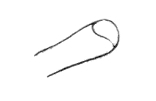
-. Scape with normal apex ... 2
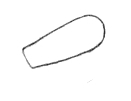 |
| 15 L A T E S T R E P L I E S (Newest First) |
| Francesco |
Posted - 03/12/2015 : 14:29:00
16. Middle-sized species with normal head and tuberculed pronotum .... Pachystolini (click on Gallery or on Forum for images)
-. Large to giant species with large head and smooth pronotum ........... Petrognathini (click on Gallery or on Forum for images) |
| Francesco |
Posted - 03/12/2015 : 14:14:57
15. Smaller species, with shorter limbs (Worldwide, especially South America) .... Desmiphorini (here also Estolini, Apodasyni, Zygocerini, etc.)
-. Medium or large species with longer limbs (Africa and Asia, originally Gondwanan) ... 16
Differences are not well defined |
| Francesco |
Posted - 03/12/2015 : 14:06:22
14. Fore legs extremely long (America) ... Acrocinini
-. Fore legs normal ............... 15 |
| Francesco |
Posted - 03/12/2015 : 13:55:53
13. Body elongated, somewhere cylindrical (South America) ..................................... Colobotheini (click on Gallery for images)
-. Body short and wide (Worldwide, especially South America) .................................... Acanthocinini (click on Gallery or on Forum for images)
Differences are not well defined |
| Francesco |
Posted - 03/12/2015 : 13:44:24
12. Scape club-shaped ........................... Acanthoderini (click on Gallery or on Forum for images)
-. Scape elongated ..................................... 13 |
| Francesco |
Posted - 03/12/2015 : 13:43:52
11. Body minute, convex; elytral base and/or pronotum often with a dorsal spine; habitus similar to ants or Ptinidae ......................... Cyrtinini
-.Larger, body generally flat dorso-ventrally; elytral base sometimes with an obtuse tubercle ........................... 12 |
| Francesco |
Posted - 29/03/2014 : 09:23:10
10. Head short; pronotum with lateral tubercles and/or ridges; mesosternum some or less fused with the prosternum (mainly Australian Region) ........................... Tmesisternini (click on Gallery or on Forum for images)
-. Head and prosternum simple; pronotum never with lateral ridges .......... 11
|
| Francesco |
Posted - 29/03/2014 : 09:16:11
9. Mesocoxal cavities closed (separated from epimera) ........................... 10
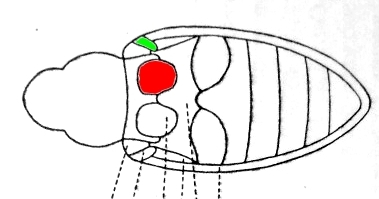
-. Mesocoxal cavities open (connected to the epimera) ........................... 14
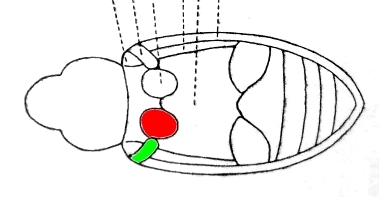 |
| Francesco |
Posted - 29/03/2014 : 09:11:34
8. Antennae fine; labium with sparse hairs .......... Crossotini (click on Gallery or on Forum for images)
-. Antennae thick; labium with 4 hair fascicles ....... Phrynetini (click on Gallery or on Forum for images) |
| Francesco |
Posted - 29/03/2014 : 09:00:34
7. Antennomere IV with a lateral dimple at the apex; antennae usually longer than body in males (Asian and African species) ... Ceroplesini (click on Gallery or on Forum for images)
-. Antennomere IV without a lateral dimple at the apex; antennae usually shorter in males (mainly African species) ..................... 8
|
| Francesco |
Posted - 29/03/2014 : 08:54:27
6. Body posteriorly more or less convergent, elytra pubescent and with hair fascicles on the disc (Holoarctic) ... Pogonocherini
-. Body more or less cylindrical, always without fascicles (Tropical) ... Desmiphorini (pars, here also Estolini, Apodasyni, Zygocerini, etc.) |
| Francesco |
Posted - 29/03/2014 : 08:45:02
5. Mesocoxal cavities closed (separated from epimera); body small ........................... 6

-. Mesocoxal cavities open (connected to the epimera); body usually medium or large ... 7
 |
| Francesco |
Posted - 29/03/2014 : 08:34:10
4. Metepisterna widened ............... Saperdini, Astathini (Key here)

Notice that the metepisterna (the area between the hind legs under the hind wings) is triangular and not parallel-sided as in other cerambycids.
-. Metepisterna normal ................ 5 |
| Francesco |
Posted - 29/03/2014 : 08:31:40
3. Mesotibiae (tibiae II) simple, without a furrow or a teeth (most primitive tribes) ...... 4
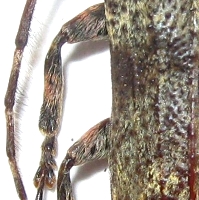
-. Mesotibiae (tibiae II) with a furrow, a teeth or a tubercle ................................... 9
 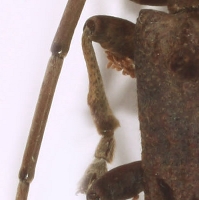 |
| Francesco |
Posted - 29/03/2014 : 08:17:33
2. Wingless (apterous) species, metasternum short ... Morimopsini, Parmenini (see Key to wingless Lamiinae)

-. Winged species, metasternum normal ... 3
 |


